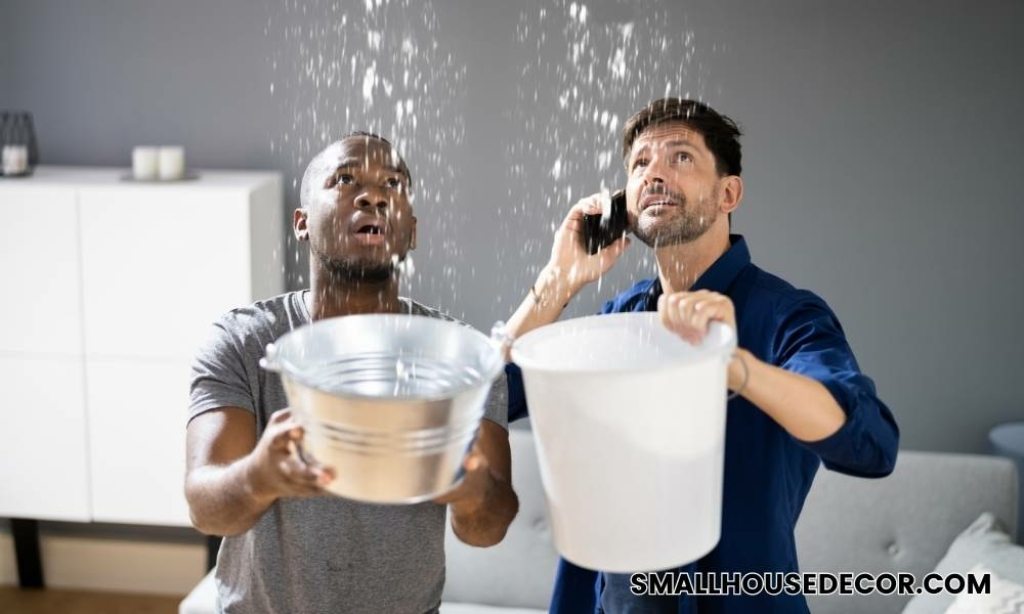A leaky roof poses a serious threat to your home, potentially resulting in extensive damage, expensive repairs, and compromising your safety and comfort.
To safeguard your property and well-being, it’s essential to be aware of the common causes of roof leaks and proactively take preventative measures. By doing so, you can effectively prevent issues and maintain a safe and watertight roof for your home.

- Age and Wear:
Over time, roofs naturally deteriorate due to exposure to the elements. Roofing materials may weaken, crack, or become dislodged, allowing water to penetrate. Regularly inspecting your roof and addressing minor issues promptly can help extend its lifespan and prevent more extensive leaks.
Preventative Measures:
- Schedule annual roof inspections by a professional roofing contractor.
- Replace damaged or missing shingles, tiles, or roofing material immediately.
- Consider investing in high-quality, long-lasting roofing materials.
- Poor Roof Installation:
Improperly installed roofs are more susceptible to leaks. If the flashing, underlayment, or sealants are not installed correctly, water can seep through gaps and cause leaks. Hiring a reputable roofing contractor with proven expertise is crucial to ensure a proper roof installation.
Preventative Measures:
- Research and select a trustworthy and experienced roofing company for installation.
- Request references and reviews from previous customers to gauge their workmanship.
- Ensure that the contractor uses high-quality materials and follows industry best practices.
- Clogged Gutters and Downspouts:
Gutters and downspouts play a vital role in directing rainwater away from your roof and foundation. When they become clogged with debris like leaves and twigs, water can pool on the roof and find its way into your home, causing leaks and water damage.
Preventative Measures:
- Clean gutters and downspouts regularly, especially after heavy storms.
- Install gutter guards to prevent debris accumulation and make maintenance easier.
- Damaged or Aging Roof Flashing:
Flashing is a weather-resistant barrier that seals the vulnerable joints and intersections of your roof, such as chimneys, vents, and skylights. If flashing is damaged, improperly installed, or starts to degrade, water can infiltrate your home through these entry points.
Preventative Measures:
- Inspect flashing regularly and look for signs of wear and tear.
- Replace damaged flashing promptly to maintain a watertight seal.
- Moss and Algae Growth:
While moss and algae may seem harmless, they can wreak havoc on your roof. Moss tends to retain moisture, which can seep underneath shingles and tiles, compromising the roof’s integrity. Algae growth, on the other hand, can dislodge granules from asphalt shingles, reducing their protective properties.
Preventative Measures:
- Keep your roof clear of debris and trim overhanging branches to reduce shade and moisture.
- Use zinc or copper strips on the roof’s ridge to inhibit moss and algae growth.
- Ice Dams:
In colder climates, ice dams can form on roofs, leading to leaks when the melting ice cannot drain properly due to clogged gutters or poor insulation. The backed-up water can seep under the roof covering and cause significant damage.
Preventative Measures:
- Ensure proper insulation and ventilation in your attic to prevent ice dam formation.
- Keep gutters clear of debris to allow for proper drainage.
By familiarizing yourself with the typical reasons for roof leaks and adopting preventative measures, you can shield your home from water damage and costly repairs. Consistent maintenance and timely repairs are crucial in preserving a strong and durable roof, ensuring your home’s protection and offering you peace of mind.